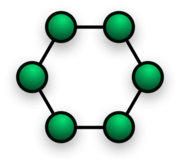Friday, February 12, 2010
Tuesday, February 9, 2010
7. Example of networking devices and their functions, post at least 10 w/ picture.
Hubs-is a device for connecting multiple twisted pair or fiber opticEthernet devices together and making them act as a single network segment.

Switches-is an electrical component that can break an electrical circuit, interrupting the current or diverting it from one conductor to another.

Routers-is a networking device whose software and hardware are usually tailored to the tasks of routing and forwarding

Gateways-gateway may contain devices such as protocol translators, impedance matching devices, rate converters, fault isolators, or signalsystem interoperability. translators as necessary to provide
CSU/DSU-(Channel Service Unit/Data Service Unit) is a digital-interface device used to connect a Data Terminal Equipment device or DTE, such as a router, to a digital circuit
Network interface cards (NICs), ISDN adapters, and system area network cards-s a computer hardware component designed to allow computers to communicate over a computer network. It is both an OSI layer 1
Wireless access points (WAPs)- is a device that allows wireless communication devices to connect to a wireless network using Wi-Fi, Bluetooth or related standards.
Modems-is a device that modulates an analog carrier signal to encode digital information, and also demodulates such a carrier signal to decode the transmitted information.

5. What is Networking?
4. Examples of OSI Layer, their definition in order.
Layer 7:Application Layer
Defines interface to user processes for communication and data transfer in network
Provides standardized services such as virtual terminal, file and job transfer and operations
Layer 6:Presentation Layer
Masks the differences of data formats between dissimilar systems
Specifies architecture-independent data transfer format
Encodes and decodes data; Encrypts and decrypts data; Compresses and decompresses data
Layer 5:Session Layer
Manages user sessions and dialogues
Controls establishment and termination of logic links between users
Reports upper layer errors
Layer 4:Transport Layer
Manages end-to-end message delivery in network
Provides reliable and sequential packet delivery through error recovery and flow control mechanisms
Provides connectionless oriented packet delivery
Layer 3:Network Layer
Determines how data are transferred between network devices
Routes packets according to unique network device addresses
Provides flow and congestion control to prevent network resource depletion
Layer 2:Data Link Layer
Defines procedures for operating the communication links
Frames packets
Detects and corrects packets transmit errors
Layer 1:Physical Layer
Defines physical means of sending data over network devices
Interfaces between network medium and devices
Defines optical, electrical and mechanical characteristics
There are other network architecture models, such as IBM SNA (Systems Network Architecture) model . Those models will be discussed in separate documents.
3.What is OSI Layer?
2.Examples of Network Topology, their Definition and post example picture.
Bus
Bus network topology
- In local area networks where bus topology is used, each machine is connected to a single cable. Each computer or server is connected to the single bus cable through some kind of connector. A terminator is required at each end of the bus cable to prevent the signal from bouncing back and forth on the bus cable.
Star
Star network topology
In local area networks with a star topology, each network host is connected to a central hub. In contrast to the bus topology, the star topology connects each node to the hub with a point-to-point connection. All traffic that transverses the network passes through the central hub. The hub acts as a signal booster or repeater.
Ring
Ring network topology
- In local area networks where the ring topology is used, each computer is connected to the network in a closed loop or ring. Each machine or computer has a unique address that is used for identification purposes. The signal passes through each machine or computer connected to the ring in one direction. Ring topologies typically utilize a token passing scheme, used to control access to the network.
Mesh
The value of fully meshed networks is proportional to the exponent of the number of subscribers, assuming that communicating groups of any two endpoints, up to and including all the endpoints, is approximated by Reed's Law.
Fully connected mesh topology
Tree
Tree network topology
Also known as a hierarchical network.
The type of network topology in which a central 'root' node (the top level of the hierarchy) is connected to one or more other nodes that are one level lower in the hierarchy (i.e., the second level) with a point-to-point link between each of the second level nodes and the top level central 'root' node, while each of the second level nodes that are connected to the top level central 'root' node will also have one or more other nodes that are one level lower in the hierarchy (i.e., the third level) connected to it, also with a point-to-point link,













